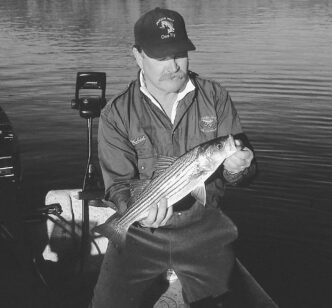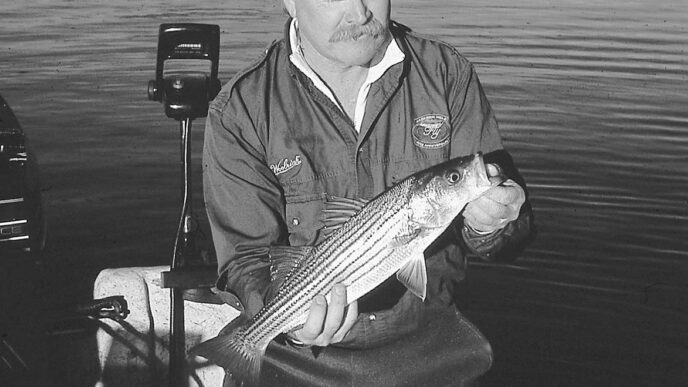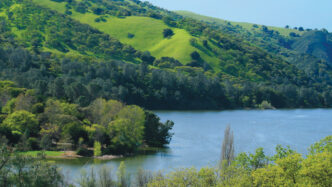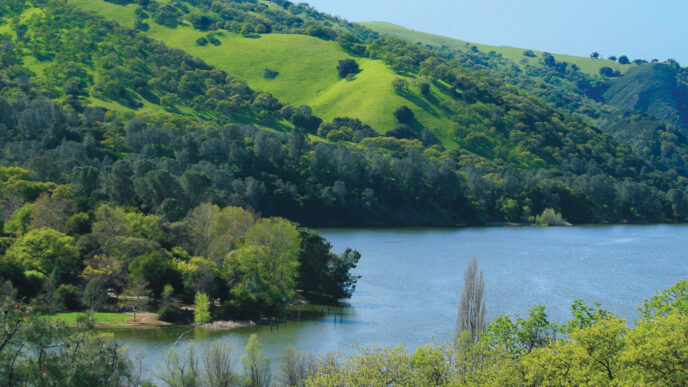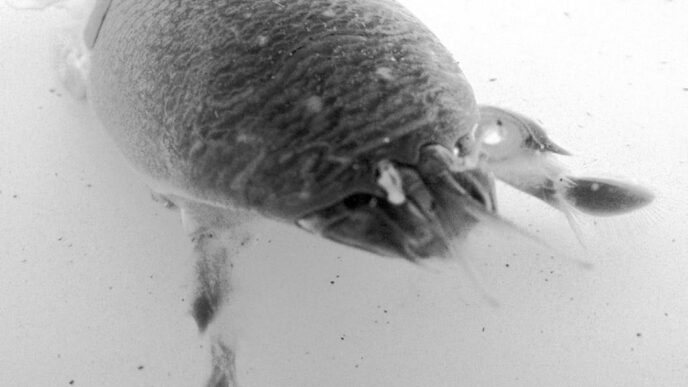Sacramento’s origin goes back to the days of the Gold Rush and the early westward expansion that forever changed the face of a largely Hispanic and Russian West Coast. When the transcontinental railroad was completed, it linked Sacramento and the region with the rest of our country. This historic community is now the government center for the eighth-largest economy in the world. It is also a crossroads for fly fishers, an outdoor-oriented metropolis nestled at the confluence of the American and Sacramento Rivers with close access to three of the major passes through the Sierra.
For the fly fisher, Sacramento can be a destination in itself or a stop on the way to somewhere else. Urban angling destinations abound in and immediately around the River City, including its two rivers and the great Sacramento–San Joaquin Delta. Roads lead in all directions to upper-echelon fly-fishing opportunities. An angler can go south into the Delta, north toward Redding, Burney, and the Trinity River, east toward the challenging American, Bear, Yuba, or Truckee River systems, or west toward Putah Creek, Lake Berryessa, Stony Gorge and Indian Valley Reservoirs, or Clear Lake. Sacramento also supports three full-service fly shops. Few other places on earth offer the four-season angling that we have in California.
Some of my first fishing trips in the 1970s were early morning journeys to the American River east of Sacramento for steelhead in the winter and then for shad in the late spring and early summer. One such outing on the American stands out in my mind. Our group from the Livermore Fly Fishermen joined the shad lineup on the south side of the American at the Bradshaw Avenue access point on the
American River Parkway. We were tired from an hour and forty-five minute drive from Livermore in a thick tule fog and jittery from the high-octane coffee and sugary doughnuts that were our breakfast, but we settled down and were flinging shooting heads and shad flies over the water toward the far bluff, enjoying the bull and banter of shoulder-to-shoulder social angling.
Around eight in the morning, we were distracted by motion across the river on the opposite bank. A gentleman dressed in proper Abercrombie and Fitch fly-fishing attire (that is, attire from the old Abercrombie and Fitch — he wasn’t a shirtless 17-year-old) walked from a beautifully landscaped, architecturally interesting home to the edge of the river bluff and was handed a thermos of coffee by what the river chorus discerned as an attractive, curvy spouse still dressed in a luxurious bathrobe. The lovely lady kissed our gentlemen angler passionately, handed him a lunch sack, his thermos, and a rigged fly rod and wished him well. He walked down a bluff path with fly rod in hand, untied his pram, and rowed over to our side, where he joined the line.
I vowed to myself at that moment that at some point in my life, I would live on or very near to a body of fishable water before I died. That would come to pass. I was fortunate that my parents moved to Fair Oaks and that my in-laws lived near the river in Sacramento. The drive from my home and workplace in the Bay Area and its traffic was much more tolerable after I discovered the angling opportunities that were close to their respective homes. Mom and Dad lived near Sailor Bar on the American. With the help of the local fly shops and due diligence on my part, I learned the river.
Today, I live most of the year in the Sierra foothills, but am an hour away from Sunrise Avenue and an hour and fifteen minutes from Watt Avenue, Goethe Park, and the Sacramento ship channel’s turning basin. Migrating salmon beckon in the fall, steelhead in the winter, and stripers in the American during the late summer and again in the Delta during the fall. Largemouth and smallmouth bass abound yearround in oxbows and sloughs. I have business in Sacramento fairly often and try to work in an hour’s stop at Folsom Lake’s Rattlesnake Bar, casting threadfin shad patterns for winter rainbows. Other options include a morning fling for steelhead at Sunrise Avenue with a business lunch at La Provence in Roseville or dinner at a number of spots in downtown Sacramento. During winter, my rooftop pram can explore the turning basin for stripers on the tide. There could be time for a Sacramento Kings basketball game at Arco Arena before hitting the road back to Grass Valley. Another stop can be the January International Sportsmen’s Exposition at Cal Expo. Sacramento was still known as a “cow town” in the 1970s and 1980s, but it has grown to a metropolitan area of 1.2 million people. In addition to urban angling, there is opera, a symphony orchestra, renowned universities and a medical center, a legislature of dubious quality, and an exciting, growing restaurant community with a repertoire that ranges from places such as Dad’s Kitchen, which has been featured on the Food Channel’s “Diners, Drive-Ins, and Dives,” through to moderately priced, ethnic-fusion eateries such as rising-star chef Billy Ngo’s Red Lotus, to stunning Asian cuisine at Mai Pham’s Lemon Grass and fine dining at Biba in midtown. Upriver and on the water, we have Swabbies and the Alamar Restaurant and Marina. You can’t find two more earthy and fun places for a frosty beer with fish and chips or a pulled-pork sandwich. And these possibilities just scratch the surface of this ever-changing restaurant scene. “The Foraging Angler” has never reviewed a major metropolitan area. It is a challenging task, but these restaurants should appeal to a wide range of anglers and their families. I’ve tried them all more than once, in many cases a number of times. The criteria for inclusion were a good dining experience, whatever the price point, and a positive answer to the often-asked question “Would you return?”
Dad’s Kitchen
I discovered Dad’s Kitchen in a Sacramento Bee food-section article on the ultimate hamburger. Dad’s is a funky, hole-in-the-wall neighborhood eatery near South Land Park and Sacramento City College. It does a fabulous job with everything on the menu. Close to the I-80/50/99 freeway intersection, it’s an easy detour on the way to the American River.
Owner Julio and partner Christine believe in using quality ingredients in all their offerings. These include “ The Cuban,” “Dad’s Reuben,” the “Angry Man Panini,” and half of a free-range Petaluma chicken. Dad’s burgers use buns from heralded Village Bakery in Davis. Their signature “Dad’s Burger” features a bleu cheese-and-bacon-encrusted patty of 5 Dot Ranch grass-fed beef with tomato, lettuce, onion, and Aleppo chili spread. Mustard would detract. My wife and I shared a burger and an order of Dad’s plain, thick-cut fries, which were heavenly. I had a 16-ounce Green Flash microbrew and walked away feeling euphoric and full. We checked out neighboring tables, and all the food looked inviting and downright good. Everybody I queried in the pleasant back courtyard spoke highly of their choices, and all said that if they really felt decadent, an order of Dad’s s Specialty Fries (garlic parmesan, seasoned, or bleu cheese-habanero) was the ticket. Not all dishes are artery cloggers, though. There’s a “Veggie Delight” and a “Besto Pesto.”
Julio was in the beer business, so there’s a bar with the best on tap. Wine selections are excellent, or you can bring your own bottle of special cab or zin to go with that succulent burger. I give Dad’s four stars. They are also next to Taylor’s Market/Deli and Freeport Bakery, where you can get some scrumptious takeout food for a break on the river.
Dad’s Kitchen is located at 2968 Freeport Boulevard in Sacramento. Phone (916) 447-3237; on the Web at http://www.ilovedadskitchen.com. Open Monday through Friday 11:00 A.M. to 9:00 P.M., Saturdays, 8:00 A.M. to 9:00 P.M., and Sundays, 8:00 A.M. to 8:00 P.M.; breakfast served on Saturday and Sunday, 8:00 A.M. to noon. Breakfast, $6.00 to $10.50; lunch, dinner, and appetizers, $4.50 to $16.95. MasterCard and Visa accepted.
Red Lotus Kitchen and Bar
If you like adventurous food with new combinations, flavors, texture, spicing, and presentations, Billy Ngo’s Red Lotus in midtown is a must visit. A friend in the food business who trained at the Culinary Institute of America in New York once said that with some limitations, most cuisines differ only in how you cut, cook, and spice the basic ingredients, which are pretty much universal. I know that in my travels as a food writer, far too often I run into the same old same old poorly cooked, disappointing fare. Not at Red Lotus. Billy Ngo is an innovator. He and owner Peter Kwang, who also owns nearby Kru, travel to New York and China to sample other chefs’ creations, and they understand that all the senses come to bear in extraordinary food served at any price point. Ngo’s food in this brick-sided, moderndécor restaurant started out as Asian fusion, but can be Chinese, Vietnamese, or Thai and is constantly evolving in ways that can best be described as reconstructing dim sum on small plates. My wife and I celebrated our niece’s twenty-third birthday at Red Lotus because she had recently returned from a trip to Vietnam that included a cooking school in Saigon.
Choices included vegetable egg rolls with a tangy pink peppercorn gastrique, salt-and-pepper soft-shelled crabs with a honey aioli made with tobian jiang, a spicy chili-soybean sauce, and a Mongolian glazed oxtail, which was a bit gnarly, even for me. A highlight was pan-roasted margret duck breast with Japanese cucumber and scallion-stuffed steamed buns that stood out because of the rich duck flavors and juices. Next came a perfectly sautéed plate of baby bok choy with shrimp paste, garlic, and Chinese sausage.
In Asia, it is axiomatic that a feast will include a noodle dish. Clare chose a spicy crab and lemongrass chow fun with bean sprouts, carrots, fiery serrano chilies, mint, and peppery watercress. We shared all these dishes and dipped our bright-red chopsticks into a parade of artfully prepared plates. A flavorful 9×9 Lodi Zinfandel complemented the spicy array of beautiful food. The rock band setting up next door at Harlow’s beckoned, but wisdom prevailed, and we headed home toward a snow-draped Sierra. We will be back when a fresh run of steelhead calls.
Red Lotus Kitchen and Bar is located at 2718 J Street in Sacramento. Phone (916) 231-0961; on the Web at http://www.redlotuskitchenandbar.com. Open Sunday, 10:00 A.M. to 3:00 P.M., Monday through Thursday, 4:00 to 10:00 P.M., Friday and Saturday, 11:30 A.M. to midnight. MasterCard and Visa accepted.
Mai Pham’s Lemon Grass
My wife and I lived in Southeast Asia in the late 1960s and then in the Bay Area, where we became used to high-quality Asian cuisine. When we get a craving for it at our home in the foothills, we head down the hill to Mai Pham’s Lemon Grass. Whether for the two of us or for a family gathering, we know that we will get the best and will be treated royally. The ambiance approaches the trappings of fine dining, with linen tablecloths and upscale decor, yet with not quite the same price tag.
Sacramento food maven Mai Pham came from Saigon in the exodus of 1975. She is a cookbook author, teaches, and consults in the food industry and has won accolade after accolade. The secrets of her success are fresh ingredients, proper spicing, and excellent service. For a group meal, I like to start with several orders of salad rolls with poached shrimp, pork, lettuce, mint, noodles, and bean sprouts. I love the beautiful appearance and the clear, crisp flavors and textures that reveal themselves as your teeth crunch through the roll. Lemon Grass serves these with an aromatic black-bean dipping sauce with chilies and chopped roasted peanuts. Another regular dish is the grilled Saigon pork. Vande Rose Farms boneless rib chop medallions are marinated with lemongrass and toasted sesame. They’re served with cucumber noodles, rice, and a chili-lime sauce . . . clean taste sensations in multiple layers. Reviews tout “Mom’s Catfish in a Clay Pot.” Fillets are simmered in caramelized-garlic fish sauce and served in a traditional clay pot with vegetables and the stunning subtle flavor of jasmine rice. You can’t get this kind of Asian cuisine in the foothills. Come with a group so everybody can share the variety of pungent flavors.
Lemon Grass Restaurant is located at 601 Munroe Street in Sacramento. Phone (916) 486-4891; on the Web at http://www.lemongrassrestaurant.com. Lunch, Monday through Friday, 11:30 A.M. to 2:00 P.M.; Dinner, Monday through Saturday, 5:00 to 9:00 P.M. Lunch, $8.95 to $10.75; dinner, $8.95 to $27.95. MasterCard and Visa accepted.
Biba Ristorante Italiano
Biba Caggiano’s restaurant in midtown Sacramento just won a 2010 Diner’s Choice Award for best Italian cuisine in America from OpenTable.com. Biba, a petite, engaging, 74-year-old red-haired cookbook author and born hostess, holds court in an intimate setting in the Old Tavern Building. Whether you’re seated at the bar in the restaurant’s lounge or in the larger, softly lit dining room, with its colonial-shuttered windows, white walls, high, coffered ceilings, columns, and tasteful contemporary art, the food consistently knocks your socks off with its subtle, mouthwatering flavors, textures, and appearance. There is a reason that the restaurant has survived the economic downturn. Trendy restaurants, with their high-decibel, metallic dins and cold, black granite and stainless-steel décors, come and go. Biba endures. It’s a place to sample coniglio alla cacciatora con peperoni al balsamico, a slowly braised, succulent rabbit with a sauce of wine, tomato, peppers, and balsamic vinegar, served with soft polenta, or a slow-braised ossobuco, paired with an award-winning barbera or barolo. Start with breadsticks that you will want to take home and a savory, juicy beet salad. Primi piati could be a house-made porcini ravioli with the texture of a silk pillow or a subtly dressed spaghetti carbonara. A main course in itself is Biba’s famous 10-layer lasagna that incorporates a béchamel and a delicate, slow-cooked tomato sauce. The laborious cooking process takes two days, and the lasagna is served only on Thursdays and Fridays.
Biba Ristorante Italiano is located at 2801 Capitol Avenue in Sacramento. Phone (916) 455-2422; on the Web at http://www.biba-restaurant.com. Lunch, Tuesday through Friday, 11:30 A.M. to 2:00 P.M.; dinner, Monday through Thursday, 5:30 to 9:30 P.M., Friday and Saturday, 5:30 to 10:00 P.M. Lunch entrées, $15.50 to $18.50; dinner entrées, $26.00 to $32.00. MasterCard and Visa accepted.
Swabbies and the Alamar Restaurant and Marina
Every community needs a waterfront or riverfront dive. I’m not particularly pleased with “dive” options in Old Sacramento. One that gets attention has at least five thousand plastic toys on the ceiling and screaming rug rats everywhere. If that’s not bad enough, the food is mediocre. Instead, go out the Garden Highway a few miles toward the airport where I-5 crosses the Sacramento River on the way to Woodland. It’s not that far from Verona and the first wave of April shad.
Swabbies and the Alamar Restaurant and Marina are neighbors. If you want rock music on Friday nights and a cruisein river crowd mixed with bikers, this is your place. We found the fish tacos and burgers at Swabbies to be excellent, if you didn’t mind a few crumbs under your table and a décor that sports beer advertisements and used-car-lot strings of colored flags. Outdoor tables sit beneath sprawling oaks, and a palm tree or two hides in the riparian undergrowth. The coating of the fish in the taco is a secret that I could not pry from the chef, but it is unique and makes a detour worthwhile.
The Alamar Restaurant offers dinner, including prime rib, steaks, and ribs, as well as brunch. It is on a large barge that is tied up to the bank. We liked the fish and chips for lunch. River rats live alongside in houseboats, and they are friendly. It is easy to have a frosty beer and sit and watch salmon trollers, water traffic, herons, and ducks go by on a warm afternoon. The bikini traffic can be great as exuberant boaters tie up for a cool one and some good ol’ American bar food, appetizers, and raucous riverfront music. Bring your designated driver.
Swabbies on the River is located at 5871 Garden Highway in Sacramento. Phone (916) 920-8088; on the Web at http://www.swabbies.com. Breakfast, Saturday and Sunday, 9:30 A.M. to noon. Always call for hours, particularly in the off-season. Breakfast, $4.99 to $11.99; lunch and dinner, $5.74 to $13.99.
Nearby, at 5999 Garden Highway, is the Alamar Restaurant and Marina. Phone (916) 922-0200; on the Web at http://www.alamarmarina.com. Winter hours: Closed Monday and Tuesday. Wednesday and Thursday, 11:00 A.M. to 9:00 P.M., Friday, 11:00 A.M. to 10:00 P.M.,
Saturday, 10:00 A.M. to 10:00 P.M., Sunday, 10:00 A.M. to 9:00 P.M. Summer hours: Monday through Friday, 11:00 A.M. to 10:00 P.M., Saturday, 10:00 A.M. to 11:00 P.M., Sunday, 10:00 A.M. to 10:00 P.M. Brunch, $10.95 to $13.95; lunch, $9.25 to $14.50; dinner, $15.25 to $26.75. MasterCard, Visa, and American Express accepted.
Hunter, Angler, Gardener, Cook
Blog review by D. C. Ounty
My recollection of the outdoor life I was led to by my parents and their friends was of being heavily involved not simply in the activities of fishing and hunting, but in the preparation, cooking, and eating of what we caught or shot. Trout and salmon, stripers and shad, crappies, abalone, clams, and mussels, not to mention quail and pheasants, doves and geese, were all carefully cleaned and prepared for the family table. Those meals weren’t clearly separated from the activities that produced them or from our delight in the lands and waters that supported them. We were foragers of a sort back then, I suppose, though no one used that label.
Mind you, I don’t pine for the mindset that saw a legally killed limit as a test you had to pass each day you set out. What I do miss is a relationship between sport and table that seems to have faded. In part, that’s not surprising. Reduced limits, restricted seasons, and catch-and-release angling (not quite the bloodless, benign practice we hope it is, unfortunately) are inevitable offshoots of growing human populations and dwindling natural resources, and there’s no going back. But there’s something missing from an angling culture that’s totally divorced from the table — from the sustaining, sacramental rituals of providing meals to be shared with family and friends.
“Ripping lips,” “spanking them good,” and posing for another digital grip-and-grin image, while currently de rigueur, does slender credit to either the fish or those who fish for them. I think it’s possible to step a little more lightly, less narcissistically, and more purposefully into field and water, and, as season and wildlife populations allow, occasionally explore what our quarry, not to mention the edible plants that grow in California, provide for us that Safeway and The Olive Garden don’t.
To that end, and to offer at least superficial support for the notion that I’m not completely mired in the mid-twentieth century, let me recommend Hank Shaw’s Hunter, Angler, Gardener, Cook blog, to be found at net. Shaw is a writer and caterer whose blog is organized around an interest in “honest food.” His home base is in the Sacramento area, so that puts a California slant on his interests. The blog has great links to a variety of recipes for fish, shellfish, veggies, game, and charcuterie.
Shaw is good at coming up with new material, which makes the site worth checking out regularly. Recent posts have dealt with chantarelle mushrooms, Dungeness crabs, wild goose foie gras, even (gasp! Or tsk!) a recipe for baking whole striped bass. Sometimes Shaw promises more than he provides. A lead post a while ago was on making mustard, and while there’s an interesting discussion of the plant’s history, and recipes for making mustard sauce, there’s no information on foraging for the wild mustard so prevalent in California’s fields. Our seeds, according to Shaw, are the black variety, which makes a hot mustard. That sounded promising. But cautious forager that I am, I’d have liked to have heard more about harvesting and using them.
Nitpicks aside, Hunter, Angler, Gardener, Cook succeeds in providing a thoughtful and useful approach to making use of what we catch, kill, or grow. It’s gained a couple of nominations as Best Food Blog by the James Beard Foundation and an award from the International Association of Culinary Professionals. Shaw is also working on a blog-related book to be released later this year.
Reader’s Suggestion: Hog Wild in Placerville
When I head back to home to Sacramento after fishing up Highway 50 or beyond, I am often hungry by the time I reach Placerville. Lucky for me, there is a new rib place called Hog Wild one block from 50, near the west end of town, that serves some of the best barbeque in the region. It opened in the spring of 2010. I’ve visited several times and always found the food delicious, offered in large portions with friendly service. Hog Wild is cleaner than a lot of rib houses, but still uses wooden picnic tables, so it’s not too fancy. Dinners range between $9.95 and $10.95, with two sides and either pulled pork, half chicken, St. Louis pork ribs, or smoked brisket. Sides consist of cole slaw, chili with meat, chuck wagon beans, campfire spuds (oven roasted with seasoning), garlic bread, cornbread with honeybutter, and steamed veggies. They are excellent.
There’s a nice selection of beer on tap, plus wines, sodas, and ice tea. As I recall, they offer Alaskan Amber and Sierra Nevada, besides Bud (or maybe it was Coors). I got really lucky one night when I learned there were only two slices of house-made peach pie left. I bought both and took them home to share with my spouse.
Hog Wild is at 38 Main Street in Placerville. Phone (530) 622-3883; on the Web at www.hogwildbbqca.com. You can NOT miss the place. It is painted with bright orange flames, with a large sign that reads “BBQ” easily visible from Highway 50. The best exit to take is Canal Street, one block west of Main Street. Hog Wild is about a block away and easy to spot. CRAIG MCCULLOCH
Via E-mail
Reader’s Suggestion: Steamboat Inn, Oregon
Without a doubt, the best place for a steelheader to eat is at the famous Steamboat Inn, located along the North Umpqua Highway in Idleyld Park, Oregon. There are many reasons why the Steamboat beats all others; I’ll just list a few. Breakfast, lunch, and dinner are all first rate, and Sharon Van Loan’s cooking is legendary. The Fisherman’s Dinner is served later than normal to accommodate anglers. Where else can you walk into a place to eat with your waders on and look out over the most storied steelhead fly water in the U. S.?
The Steelhead Special omelet fuels you for a long morning on the river. The pies at lunch are a meal unto themselves, and the five-course dinner at night is just outstanding. To get a feel for the area, read “Where Flows the Umpqua” in Ernest Schwiebert’s collection of essays, Death of a Riverkeeper. Enough said.
LOU DUNCAN
Sisters, Oregon





